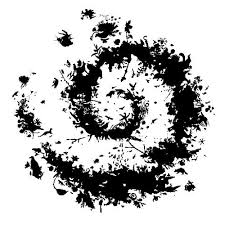natural heritage
The Vanoise National Park (PNV): France's first park
In 1963, the Vanoise National Park was created by decree. Of the 10 French national parks, it was the first to be created.
Its first vocation was to be a territory in keeping with the species it wished to protect: the Alpine ibex (Capra ibex).
Forty years later, it follows in the footsteps of the Gran Paradiso National Park in Italy, with which it shares a 14 km border.
With 1,250 km2, the two parks, which have been twinned since 1972, form the largest protected area in Western Europe.
The core area of the Vanoise National Park is 528 km2. The core area, formerly called the Central Zone, corresponds to the park in the strict sense.
It is an area protected by specific regulations. Located between the high valleys of the Maurienne and Tarentaise, the park is surrounded by high mountains.
The highest peak in the heart of the park, culminating at 3,855 m, is the Grande Casse, the second highest is the Mont Pourri at 3,779 m, in the commune of Peisey-Nancroix.
A great Alpine Park
The great variety of rocks, plants and animals contribute to the remarkable richness of the Vanoise massif.
The number of plant species is estimated at 1,200, of which 200 are particularly remarkable.
Among the protected species present in the commune are the Piedmont Primrose (Primula pedemontana) and the delicate Venus's Sabot (Cypripedium calceolus).
What made and still makes the success of the Vanoise National Park is its emblematic mountain fauna: more than 1800 Alpine ibex (Capra ibex), the largest French colony, as well as more than 4000 chamois (Rupicapra rupicapra).
Not to mention the presence of many other mammals.
The Park is also home to nearly 120 breeding species of birds, including 26 breeding pairs of golden eagles (Aquila chrysaëtaus) and 4 breeding pairs of bearded vultures (Gypaetus barbatus), one of which has been in the Ponthurin valley since 2003.
Black Grouse (Tetrao tetrix) and Rock Ptarmigan (Lagopus mutus) are more difficult to observe.
Amphibians include the Alpine Newt (Triturus alpestris), the Red Frog (Rana temporaria) and the Natterjack Toad (Bufo calamita).
Among the insects, the spectacular Great Apollo (Parnassius apollo) coexists with more discreet species, some of which are new to science
Translated with www.DeepL.com/Translator (free version)

The spiral of Life: The emblem
This is the symbolic figure of the French national parks, an image formed by a multitude of elements (animal, plant and mineral silhouettes) organised in a spiral structure. It is a metaphorical representation of the movement, richness and complexity of life.
It is the first emblem common to all the parks (it represents the national institution, guarantor of the knowledge, respect and protection of nature). It is unique and cannot be modified in any way. A bright colour has been assigned to each park, reflecting its specificity and evoking the colours of nature. It contrasts with the black of the emblem.
For the Vanoise National Park, the blue is reminiscent of the gentian.
Its first vocation was to be a territory in keeping with the species it wished to protect: the Alpine ibex (Capra ibex).
Forty years later, it follows in the footsteps of the Gran Paradiso National Park in Italy, with which it shares a 14 km border.
With 1,250 km2, the two parks, which have been twinned since 1972, form the largest protected area in Western Europe.
The core area of the Vanoise National Park is 528 km2. The core area, formerly called the Central Zone, corresponds to the park in the strict sense.
It is an area protected by specific regulations. Located between the high valleys of the Maurienne and Tarentaise, the park is surrounded by high mountains.
The highest peak in the heart of the park, culminating at 3,855 m, is the Grande Casse, the second highest is the Mont Pourri at 3,779 m, in the commune of Peisey-Nancroix.
A great Alpine Park
The great variety of rocks, plants and animals contribute to the remarkable richness of the Vanoise massif.
The number of plant species is estimated at 1,200, of which 200 are particularly remarkable.
Among the protected species present in the commune are the Piedmont Primrose (Primula pedemontana) and the delicate Venus's Sabot (Cypripedium calceolus).
What made and still makes the success of the Vanoise National Park is its emblematic mountain fauna: more than 1800 Alpine ibex (Capra ibex), the largest French colony, as well as more than 4000 chamois (Rupicapra rupicapra).
Not to mention the presence of many other mammals.
The Park is also home to nearly 120 breeding species of birds, including 26 breeding pairs of golden eagles (Aquila chrysaëtaus) and 4 breeding pairs of bearded vultures (Gypaetus barbatus), one of which has been in the Ponthurin valley since 2003.
Black Grouse (Tetrao tetrix) and Rock Ptarmigan (Lagopus mutus) are more difficult to observe.
Amphibians include the Alpine Newt (Triturus alpestris), the Red Frog (Rana temporaria) and the Natterjack Toad (Bufo calamita).
Among the insects, the spectacular Great Apollo (Parnassius apollo) coexists with more discreet species, some of which are new to science
Translated with www.DeepL.com/Translator (free version)

The spiral of Life: The emblem
This is the symbolic figure of the French national parks, an image formed by a multitude of elements (animal, plant and mineral silhouettes) organised in a spiral structure. It is a metaphorical representation of the movement, richness and complexity of life.
It is the first emblem common to all the parks (it represents the national institution, guarantor of the knowledge, respect and protection of nature). It is unique and cannot be modified in any way. A bright colour has been assigned to each park, reflecting its specificity and evoking the colours of nature. It contrasts with the black of the emblem.
For the Vanoise National Park, the blue is reminiscent of the gentian.
0 result

